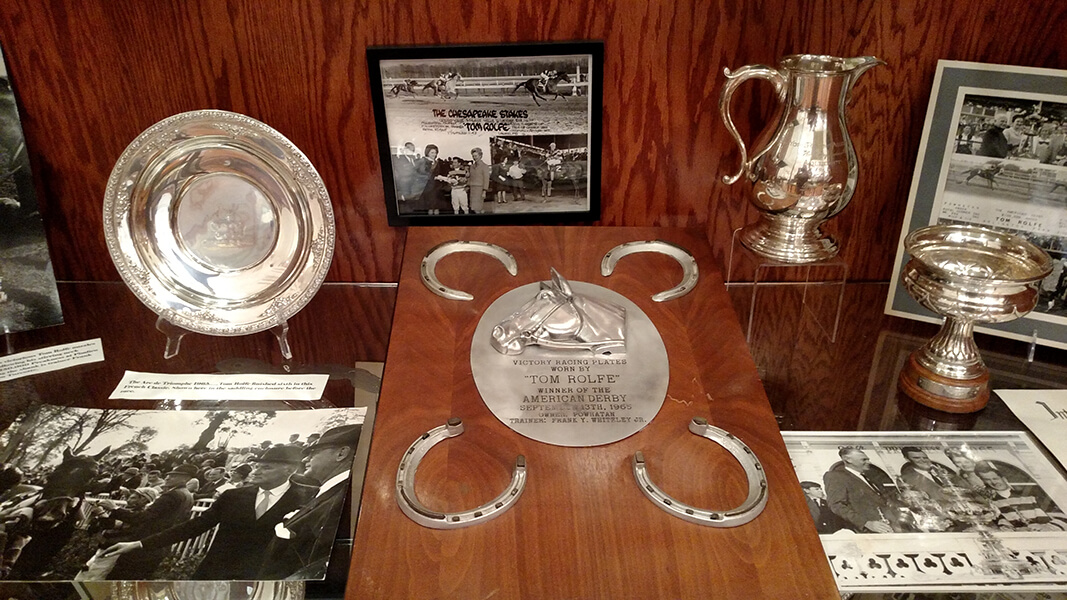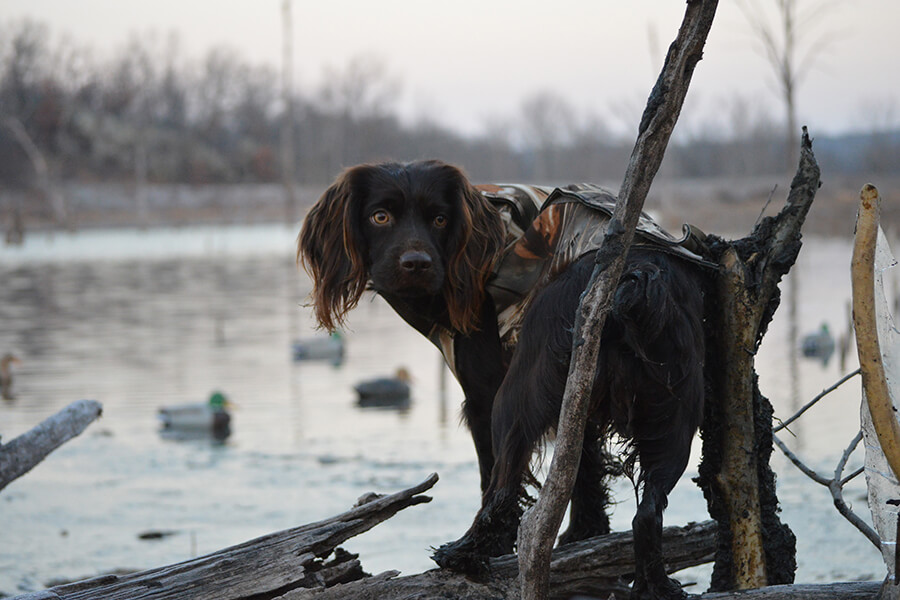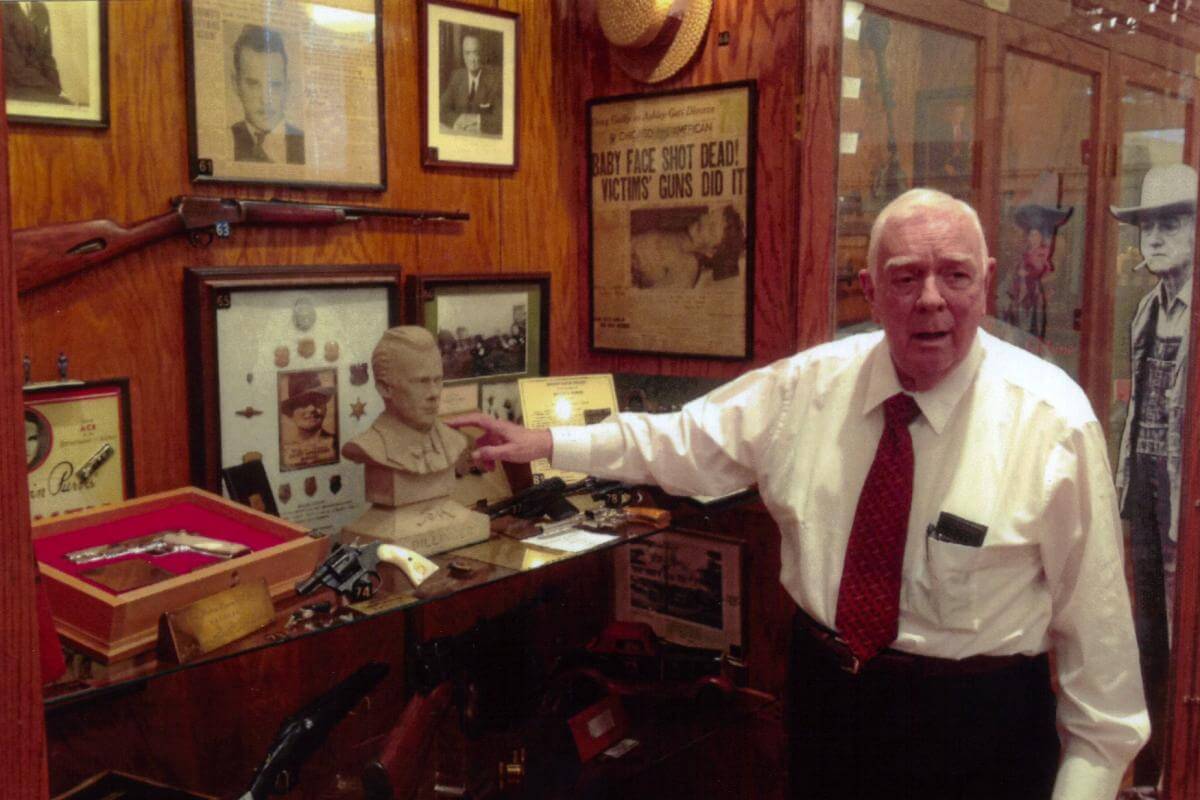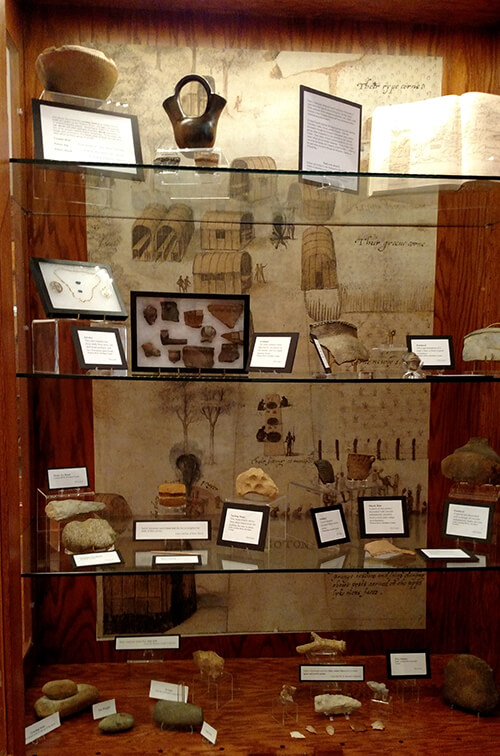Exhibits in the museum
In the Whitley Room
Turning Points – the Battles of Camden
Turning Points : The Battles of Camden uses artifacts from the Camden battlefield, reproduction articles, text, and maps to tell the story of two major battles of the American Revolution. Both battles, the Battle of Camden and the Battle of Hobkirk’s Hill, were part of the Southern Campaign. This exhibit focuses on the people, movements, and outcomes of both battles – and how those battles ultimately led to American Independence.
At the first Battle of Camden, August 16, 1780, units of the British Army commanded by Lieutenant General Charles, Lord Cornwallis met American Major General Horatio Gates’ “Grand Army” a few miles north of Camden. When the smoke cleared, the Continental army was dead, dying, in full retreat, or taken prisoner. This was the second Continental Army defeated and taken prisoner by the British in four months. The British believed that they had reached a turning point in the rebellion. From his victory at Camden, Cornwallis prepared to march his Army north to suppress the rebellion in North Carolina and to join his army with the British forces already in Virginia. In this time and at this place, the revolution seemed lost.
April 1781 – less than a year later – how things had changed.
Events in the last several months had not borne out the British exuberance after their victory at Camden or their belief that the war in the South was all but over. American fears of a widespread surrender on the part of the people and repudiation by their European friends also did not come to pass. American victories at Kings Mountain (October 1780) and Cowpens (January 1781), constant militia strikes from partisan leaders, and an unyielding hatred on the part of patriots for the British cause forced the British to re-evaluate their strategy in the South. On April 25, 1781, Cornwallis abandoned the British forces in South Carolina when he departed Wilmington, North Carolina for Virginia.
On that day, Colonel Francis, Lord Rawdon prepared to face a third American army. Rawdon, left in field command of all British forces in South Carolina, commanded the garrison at the occupied town of Camden. Rawdon knew that Major General Nathanael Greene was on his way with over 1,000 veteran soldiers. Although the British position behind Camden’s fortifications was secure, Rawdon decided to attack the Americans. Once again, an out-numbered British force faced and defeated a superior Continental Army. But, this victory was different. The defeated American force did not flee.
After his victory, Rawdon faced a decision. Another turning point. At the moment, the British were secure in their fortress at Camden. But….. Greene’s army, a numerically superior force with all his artillery and provisions intact, still threatened the town. Partisans under Brigadier General Francis Marion and Continentals under Lieutenant Colonel Henry “Light Horse Harry” Lee had cut the British supply line at Fort Watson and had Fort Motte under siege. General Sumter’s force was preparing to attack British outposts at Granby (Cayce, Lexington County) and Orangeburg and Col. Elijah Clarke’s Georgia and South Carolina militia were planning the siege of Fort Galphin (Silver Bluff, Aiken County). As Rawdon wrote in May 1781, the “whole interior country” was in revolt. Rather than sit in Camden or venture out to battle the Continental Army once again, Rawdon decided it was “necessary… to withdraw my force” back to Charleston. Rawdon evacuated Camden on May 10, 1781. Thus began the British retreat back to the sea.
Permanent Exhibits in the Main Gallery

The Frank Y. Whiteley Collection
Featuring items from the career of the legendary trainer of champions.
During Horse Racing Hall of Fame Trainer Frank Whiteley’s (1915-2008) legendary career, the Camden resident trained four champion thoroughbreds – Damascus, Tom Rolfe, Forego, and Ruffian. This exhibit examines Whiteley’s forty-nine years as one of the foremost trainers of Thoroughbreds in the United States. Artifacts include trophies, photographs, prints, and tack.

Little Brown Dog
An exhibit featuring the history of the Boykin spaniel, South Carolina’s state dog.
In 1985, South Carolina recognized the Boykin Spaniel as the official State Dog. This exhibit tells his story.
In the early 1900s, L. Whitaker Boykin and a small stray dog he named Dumpy made history.
Boykin was an avid hunter. Dumpy had loads of natural hunting abilities and his small size allowed him to get into and out of boats without dumping the hunters into the water. After realizing just how special the little brown dog was, Whit Boykin began looking for the best females to breed with Dumpy. From this foundation, grew the Boykin Spaniel.
The earliest Boykin Spaniels were bred for small size, coloring, good temperament, and exceptional swimming and retrieving ability. As early as the 1920s, locals could tell one of Whit Boykin’s dogs from any others and by the 1930s they became locally known as the Boykin Spaniel. Today, the Boykin is recognized by the United Kennel Club and the American Kennel Club. They are known for their intelligence, charm, and versatility. They are your best hunting companion and your favorite lap dog. They are South Carolina’s own “little brown dog.”
All images courtesy of Dawn Crites and the Boykin Spaniel Society
The Ross E. Beard Collection
Featuring firearms from the 14th century to the present.
Beard conducting a tour of the Collection
As a long-time collector, Ross Beard sought out every gun show, antique sale, auction, flea market, specialty store, and hole-in-the-wall that he could in the hopes of finding that one special item that would add to his internationally known collection.
Currently on exhibit are a number of firearms, from a 16th century Chinese wheel lock to a c2000 semi-automatic 9mm M-950 “Calico.” One section of the exhibit displays firearms and personal artifacts related to Melvin Purvis, John Dillinger, and other outlaws of the early 20th century. Another section, on British SAS Captain Peter Mason, a real life James Bond, contains a Russian Cigarette gun, an umbrella with a retractable sleeve that exposes a poison needle, and Mason’s Bowler hat with a metal lining and a hidden .25 caliber Bauer pistol. A third section focuses on David “Carbine” Williams, famed inventor and one of the principal designers of the World War II era M-1 carbine.

Native Americans
Along the Wateree River
NATIVE AMERICANS ALONG THE WATEREE
Native Americans inhabited South Carolina for thousands of years before the Spanish arrived along the Carolina coast. While estimates of the indigenous population vary widely, what is known is that European disease and wars decimated Native American population centers.
In central South Carolina, the largest groups were the Catawba, Cherokee, Cusabo, Sewee, and the Wateree. After the devastation wrought by European colonization, many smaller groups either disappeared or were absorbed by the Catawba Nation.
These names of these vanished people live on in the names which dot our modern landscape. Think of them when you cross the Saluda, the Congaree, or the Pee Dee — reflect on the past when you travel through the Waxhaws, Santee, or Winyah Bay.
Most of the artifacts in this display come from along the Wateree River or Lynch’s Creek in Kershaw County.

